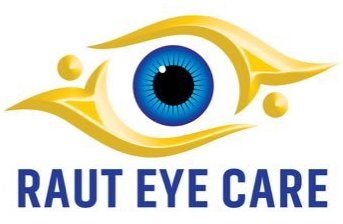Blogs for Glaucoma
List of articles for Glaucoma

Canaloplasty glaucoma surgery
Glaucoma, often referred to as the "silent thief of sight," is a group of eye conditions that gradually damage the optic nerve and can lead to vision loss or blindness if left untreated. One of the primary risk factors for glaucoma is elevated intraocular pressure (IOP), which occurs when the fluid within the eye, known as aqueous humor, fails to drain properly. Canaloplasty, a relatively novel surgical technique, has emerged as a promising option for managing glaucoma by restoring the natural drainage system of the eye. In this article, we delve into the intricacies of canaloplasty glaucoma surgery, its benefits, and its potential impact on patients' quality of life. Understanding Canaloplasty Glaucoma Surgery: Canaloplasty is a minimally invasive surgical procedure designed to enhance the outflow of aqueous humor from the eye, thereby lowering IOP and preventing further damage to the optic nerve. Unlike traditional glaucoma surgeries that involve creating a new drainage pathway, canaloplasty seeks to reestablish the eye's natural drainage system—the Schlemm's canal and its associated collector channels. The procedure involves the following key steps: Microcatheter Insertion: The surgeon creates a tiny incision in the eye to access the Schlemm's canal, a circular channel located near the corneal limbus. A microcatheter is then threaded through the canal, gently stretching it open. Viscodilation: A sterile, gel-like substance called viscoelastic is injected into the canal to further dilate and reinforce its structure, allowing for improved drainage. Suture Placement: To maintain the newly created pathway, a suture is placed within the canal. This suture gently compresses the canal's walls, preventing its closure and ensuring sustained drainage. Tension Adjustment: The tension of the suture is adjusted to optimize drainage and normalize IOP. This step requires meticulous precision to achieve the desired outcome. Incision Closure: Once the suture is in place, the incision is carefully closed, completing the surgery. Benefits of Canaloplasty: Minimally Invasive: Canaloplasty is considered minimally invasive compared to traditional glaucoma surgeries such as trabeculectomy or tube shunt implantation. This leads to reduced postoperative pain, shorter recovery times, and decreased risk of complications. Preservation of Conjunctival Tissue: Unlike some other glaucoma surgeries, canaloplasty avoids disruption to the conjunctival tissue, which is crucial for future treatment options. This means that if additional glaucoma surgeries are needed down the line, there is more conjunctival tissue available for those procedures. Sustained IOP Reduction: Canaloplasty aims to achieve long-term and consistent reduction in IOP, reducing the need for frequent adjustments to medication regimens. Suitability for Various Glaucoma Types: Canaloplasty is applicable to various types of glaucoma, including primary open-angle glaucoma and secondary glaucoma. It can also be considered for patients who have not responded well to other treatment modalities. Improved Quality of Life: By effectively controlling IOP and potentially halting disease progression, canaloplasty can contribute to better preservation of visual function and an improved quality of life for glaucoma patients. Conclusion: Canaloplasty glaucoma surgery represents a significant advancement in the management of intraocular pressure and the prevention of vision loss associated with glaucoma. With its minimally invasive nature, potential for sustained IOP reduction, and ability to preserve conjunctival tissue for future treatments, canaloplasty offers a promising solution for both patients and ophthalmologists. As medical technology continues to evolve, it is likely that canaloplasty will play an increasingly important role in the comprehensive care of glaucoma patients, ultimately contributing to better outcomes and enhanced vision-related well-being. If you or a loved one are considering glaucoma treatment, discussing the potential benefits and risks of canaloplasty with a qualified ophthalmologist is a crucial step in making informed decisions about your eye health.

Glaucoma department
Vision, often considered the window to the world, is a precious gift that deserves the utmost care and attention. In the bustling city of Pune, the Dr. Rajeev Raut Eye Clinic stands as a beacon of hope and innovation, particularly in the realm of glaucoma treatment. With a dedicated team led by Dr. Rakhi Shah, an esteemed glaucoma specialist, and Dr. Rajeev Raut, a veteran glaucoma surgeon, the clinic has garnered a reputation for excellence in the field of ophthalmology. Meet the Experts: Dr. Rakhi Shah, a distinguished glaucoma specialist, is known for her expertise in diagnosing and managing various forms of glaucoma. Her compassionate approach towards patients, combined with her in-depth knowledge of the intricate mechanisms of the eye, makes her a trusted name in the field. Dr. Shah's commitment to staying updated with the latest advancements in glaucoma management ensures that patients receive the most effective and personalized care. Dr. Rajeev Raut, the visionary behind the clinic, brings decades of experience as a glaucoma surgeon. His surgical skills are renowned not only in Pune but across the region. Dr. Raut's surgical finesse and dedication to innovation have set a high standard for glaucoma treatment. His patient-centered approach and emphasis on the overall well-being of his patients have earned him the respect and admiration of both his peers and patients. Cutting-Edge Equipment: The Glaucoma Department at Dr. Rajeev Raut Eye Clinic is equipped with state-of-the-art technology to provide the best possible care to patients. Some of the notable equipment includes: Optical Coherence Tomography (OCT): This advanced imaging technology allows for detailed cross-sectional views of the retina, optic nerve, and other critical structures. It aids in early detection and precise monitoring of glaucoma progression. Visual Field Analyzer: This instrument evaluates a patient's central and peripheral vision, crucial for diagnosing and monitoring glaucoma-related vision loss. Gonioscopy and Fundus Photography: These tools enable the specialists to examine the angle of the eye's drainage system and capture high-resolution images of the retina, respectively. Tonometry Devices: Accurate measurement of intraocular pressure (IOP) is crucial in glaucoma management. The clinic employs both traditional and modern tonometry methods. Laser Technology: The clinic offers advanced laser therapies like Selective Laser Trabeculoplasty (SLT) and Laser Peripheral Iridotomy (LPI) for specific glaucoma cases. Minimally Invasive Glaucoma Surgery (MIGS) Tools: These innovative surgical tools and techniques allow for less invasive procedures with quicker recovery times. Surgical Microscopes: Dr. Rajeev Raut's surgical precision is enhanced by high-quality microscopes, ensuring optimal outcomes in delicate glaucoma surgeries. Patient-Centric Care: What truly sets the Glaucoma Department at Dr. Rajeev Raut Eye Clinic apart is its unwavering focus on patient well-being. From accurate diagnosis to tailor-made treatment plans and post-operative care, patients are at the heart of every decision. The friendly and empathetic staff ensures that patients feel comfortable and confident throughout their treatment journey. Conclusion: In the realm of glaucoma treatment, the Dr. Rajeev Raut Eye Clinic shines as a beacon of excellence in Pune. With Dr. Rakhi Shah's expertise in glaucoma management and Dr. Rajeev Raut's unparalleled surgical skills, patients receive comprehensive and top-notch care. The clinic's commitment to investing in cutting-edge equipment further solidifies its position as a leader in ophthalmic care. For those seeking top-tier glaucoma treatment, the Dr. Rajeev Raut Eye Clinic stands as a testament to the power of expertise, innovation, and compassionate patient care.


